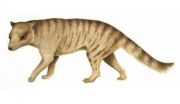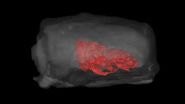(Press-News.org) Sophia Antipolis, 10 April 2014. Periodontal disorders such as tooth loss and gingivitis have been identified as a potential risk marker for cardiovascular disease in a large study reported today.(1) More than 15,000 patients with chronic coronary heart disease provided information on their dental health, with results showing that indicators of periodontal disease (fewer remaining teeth, gum bleeding) were common in this patient group and associated with numerous cardiovascular and socioeconomic risk factors.
Conversely, a lower prevalence of tooth loss was associated with lower levels of CVD risk factors, including lower glucose levels, low-density lipoprotein cholesterol levels, systolic blood pressure, and waist circumference. Diabetes and smoking were also less prevalent among patients with more teeth, while the likelihood of higher education, alcohol consumption and work stress was greater.
The report, published today in the European Journal of Preventive Cardiology, summarised information on self-reported dental health from the STABILITY trial, a clinical trial involving 15,828 participants from 39 countries all with chronic coronary heart disease and at least one additional risk factor for CHD.(2) All participants had a physical examination and blood testing, and completed a lifestyle questionnaire, which included information on dental health. They reported their remaining number of teeth (none, 1–14, 15–20, 21–25, or 26–32 (all)) and frequency of gum bleeding (never/rarely, sometimes, often or always).
Results showed a high overall prevalence of tooth loss: 16% reported having no teeth, and 41% reported having fewer than 15 remaining teeth. Approximately one-quarter of the patients (26%) reported gum bleeding when brushing teeth. However, there was some variation in these results depending on region, country and ethnic group, with the highest rates of tooth loss and gum bleeding found in Eastern Europe. Overall, almost 70% of participants were current or former smokers.
Statistical analysis showed that increasing prevalence of tooth loss was significantly associated with higher fasting glucose levels, LDL cholesterol levels, systolic blood pressure and waist circumference. A higher prevalence of gum bleeding was significantly associated with higher LDL cholesterol levels and systolic blood pressure.
This, say the authors, is the largest study of its kind to assess dental disease in coronary patients, and demonstrates a heavier burden of CVD risk factors and higher levels of biomarkers among those with more tooth loss and gum bleeding, even after adjusting for confounders (such as age, smoking, diabetes and education level). The findings suggest common risk factors for dental disease and coronary heart disease, and raise the question of whether self-described dental health can now be considered a useful marker of CVD risk.
The observed regional variations in the prevalence of periodontal disease "might partly be explained by regional differences in CV risk factor prevalence; for instance smoking". However, they concede that such differences in prevalence "indicate a complex relationship in which demographic, genetic and socioeconomic disparities are likely contributing factors". Both smoking and lower levels of education were strongly associated with periodontal disease.
Indeed, said lead author Dr Ola Vedin from the University of Uppsala, Sweden, "the evident and consistent relationship between self-reported dental status and CV risk in this population could point towards periodontal disease being a risk factor for incident CHD". However, he added, the observation that poor dental health among chronic coronary patients is linked to a heavier cardiovascular risk burden does not prove a causal link between the two conditions.
Commenting further, Dr Vedin said: "It is still a matter of debate whether periodontal disease is an independent risk factor for coronary heart disease. Some studies point to a moderate association while others are contradictory. Our findings show an association between self-reported periodontal disease and several cardiovascular risk factors and as such lend support to a possible association between the conditions." However, he would not go so far as to advocate rigorous dental hygiene measures as a strategy to reduce cardiovascular risk.
Age and smoking are well known risk factors common to both periodontal and cardiovascular disease - and with established biological explanations. "Our findings also support the notion that periodontal disease and socioeconomic status are closely related," added Dr Vedin.
He and his colleagues were "astonished" by the high prevalence of severe tooth loss seen overall in the study, but "puzzled" by the marked differences in dental prevalence between countries, even within the same geographical region.
INFORMATION: END
Periodontal disease associated with cardiovascular risk in large multicenter study
Should dental health now be considered a marker of coronary heart disease?
2014-04-10
ELSE PRESS RELEASES FROM THIS DATE:
Breastfeeding and infant sleep
2014-04-10
In a new article published online today in the journal Evolution, Medicine, and Public Health, Professor David Haig argues that infants that wake frequently at night to breastfeed are delaying the resumption of the mother's ovulation and therefore preventing the birth of a sibling with whom they would have to compete.
It has already been documented that smaller gaps between the births of siblings are associated with increased mortality of infants and toddlers, especially in environments where resources are scarce and where infectious disease rates are high, and Professor ...
Extinct carnivorous marsupial may have hunted prey larger than itself
2014-04-10
The reconstruction of an extinct meat-eating marsupial's skull, Nimbacinus dicksoni, suggests that it may have had the ability to hunt vertebrate prey exceeding its own body size, according to results published April 9, 2014, in the open access journal PLOS ONE by Marie Attard from the University of New England together with colleagues from the University of New South Wales.
Nimbacinus dicksoni is a member of an extinct family of Australian and New Guinean marsupial carnivores, Thylacinidae. Aside from one recently extinct species, the majority of information known about ...
Rare leafcutter bee fossils reveal Ice Age environment at the La Brea Tar Pits
2014-04-10
VIDEO:
This is a spinning animation of fossil of male pupa and its position within the nest cell.
Click here for more information.
LOS ANGELES — The La Brea Tar Pits, the world's richest and most important Ice Age fossil locality, is most celebrated for it collection of saber-toothed cats and mammoths. The site's lesser known, but equally vast insect collection, is also of great significance. Recent examination of fossil leafcutter bee nest cells containing pupae, led by Anna R. ...
Spironolactone not reduce primary outcome, did reduce hospitalizations for heart failure
2014-04-10
Boston, MA – Findings from the Treatment of Preserved Cardiac Function Heart Failure with an Aldosterone Antagonist (TOPCAT) trial, have revealed that adding the medication known as spironolactone (Aldactone) to existing therapy did not significantly reduce the composite time to either death from cardiovascular causes, surviving a cardiac arrest, or hospitaliization to manage heart failure in patients with heart failure and a preserved ejection fraction in a study funded by the National Heart, Lung and Blood Institute, National Institutes of Health.
The study will be ...
Study confirms impact of clinician-patient relationship on health outcomes
2014-04-10
A meta-analysis of studies that investigated measures designed to improve health professionals' interactions with patients confirms that such efforts can produce health effects just as beneficial as taking a daily aspirin to prevent heart attack. In contrast to previous such reviews, the current report from the Empathy and Relational Science Program at Massachusetts General Hospital (MGH) only included randomized, controlled trials with more reliable results than those included in earlier studies. While it has long been believed that a good patient-clinician relationship ...
Water users can reduce the risk of spreading invasive species
2014-04-10
Foreign species that are devastating water ecosystems could be "hitchhiking" around Britain on canoeists' and anglers' kit, according to a new study.
Invaders like the killer shrimp, zebra mussel and American signal crayfish have already caused extensive environmental damage and millions of pounds of economic costs.
The new research, led by the University of Leeds and the Centre for Environment Fisheries and Aquaculture Science (Cefas), found that the cleaning habits of anglers and canoeists could be a key part of the problem.
The study, based on a survey of more ...
Butterfly larvae mimic queen ant to avoid detection
2014-04-10
Parasitic butterfly larvae may mimic ants' acoustic signals to aid in the infiltration of their host colonies, according to results published April 9, 2014, in the open access journal PLOS ONE by Marco Sala from University of Turin, Italy, and colleagues.
Ants aggressively defend their colonies and nests, so successfully that these locations make a perfect shelter for another similar species to live in. However, ants have evolved a complex set of signals that allow colony members to distinguish between residents and intruders. The social parasitic Maculinea butterfly uses ...
Security barriers in US/Mexico national parks affect movement of animals
2014-04-10
Because international boundaries can be focal points for trade, illegal activity and development, national parks in their vicinity can be vulnerable to pollution, erosion and hunting as well as smuggling of people and drugs.
There is an increasing trend towards the erection of barriers to counter this illegal activity, which may reduce environmental impacts too. However barriers may restrict native species' territory, causing an environmental impact of their own.
Bristol PhD student, Jamie McCallum, now of the Zoological Society of London (ZSL), and colleagues from ...
Genetic defect may confer resistance to certain viral infections
2014-04-10
WHAT:
A National Institutes of Health (NIH) study reports that a rare genetic disease, while depleting patients of infection-fighting antibodies, may actually protect them from certain severe or recurrent viral infections. Researchers found that HIV and influenza viruses replicate in the cells of people with congenital disorder of glycosylation type IIb (CDG-IIb) at a much lower rate than in healthy donor cells, creating fewer and less infectious viruses. The study, published in The New England Journal of Medicine, was led by Sergio Rosenzweig, M.D., Ph.D., director of ...
Consuming a high-fat diet is associated with increased risk of certain types of BC
2014-04-09
High total and saturated fat intake were associated with greater risk of estrogen receptor- and progesterone receptor-positive (ER+PR+) breast cancer (BC), and human epidermal growth factor 2 receptor-negative (HER2-) disease, according to a new study published April 9 in the Journal of the National Cancer Institute.
Published data from epidemiological and case-control studies on the association between high fat intake and BC risk have been conflicting, which may be attributable to difficulties obtaining accurate information on fat intake and because of limited heterogeneity ...
LAST 30 PRESS RELEASES:
$80 million in donations propels UCI MIND toward world-class center focused on dementia
Illinois research uncovers harvest and nutrient strategies to boost bioenergy profits
How did Bronze Age plague spread? A sheep might solve the mystery
Mental health professionals urged to do their own evaluations of AI-based tools
Insufficient sleep associated with decreased life expectancy
Intellicule receives NIH grant to develop biomolecular modeling software
Mount Sinai study finds childhood leukemia aggressiveness depends on timing of genetic mutation
RSS Research Award for new lidar technology for cloud research
Novel AI technique able to distinguish between progressive brain tumours and radiation necrosis, York University study finds
Why are abstinent smokers more sensitive to pain?
Alexander Khalessi, MD, MBA, appointed Chief Innovation Officer
Optical chip pioneers physical-layer public-key encryption with partial coherence
How your brain understands language may be more like AI than we ever imagined
Missed signals: Virginia’s septic strategies overlook critical timing, study warns
Delayed toxicities after CAR T cell therapy for multiple myeloma are connected and potentially preventable
Scientists find cellular key to helping plants survive in saltwater
Medical cannabis program reduces opioid use
Immunotherapy works for sepsis thanks to smart patient selection
Cardiovascular events 1 year after RSV infection in adults
US medical prices and health insurance premiums, 1999-2024
Medical cannabis and opioid receipt among adults with chronic pain
Multichannel 3D-printed bioactive scaffold combined with siRNA delivery for spinal cord injury recovery
Triaptosis—an emerging paradigm in cancer therapeutics
A new paradigm in spectroscopic sensing: The revolutionary leap of SERS-optical waveguide integration and ai-enabled ultra-sensitive detection
Sweet tooth: How blood sugar migration in diabetes affects cavity development
Lowest suicide rate is in December but some in media still promote holiday-suicide myth
Record-breaking cosmic explosion challenges astronomers’ understanding of gamma-ray bursts
Excessive heat harms young children’s development, study suggests
Quanta Books to publish popular math and physics titles by Terence Tao and David Tong
Philanthropic partnerships fund next-generation instruments for mid-sized telescopes
[Press-News.org] Periodontal disease associated with cardiovascular risk in large multicenter studyShould dental health now be considered a marker of coronary heart disease?



